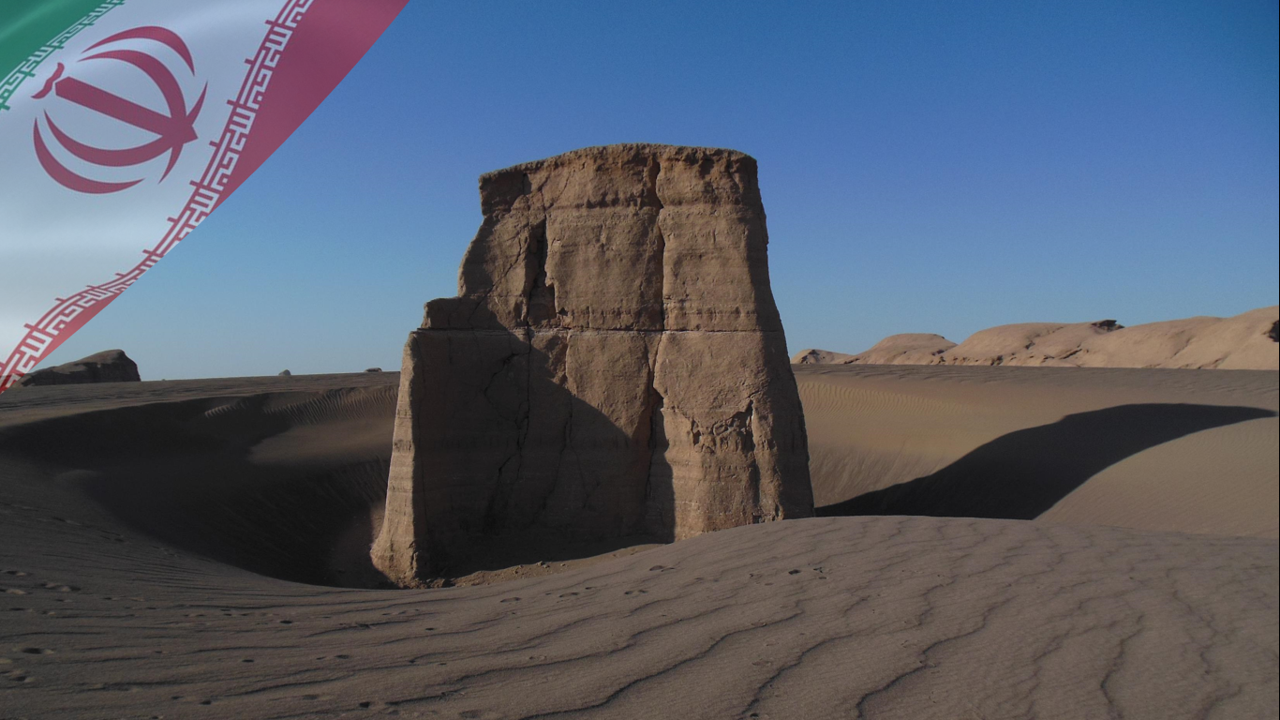In general Afghanistan is somewhat out of our sphere of research and that is for a number of reasons. Afghanistan crossroad between a number of civilizational blocks and regional interests and itself is a highly complex case which needs a number of expertise, many being beyond us at Amaraia.
Having stated that after the Ṭālebān Movement took over the Afghan capital Kabul last Sunday, 15 August there can be hardly any more suitable material to discuss this week for a Middle East research center than this rapid takeover and the new reality it creates. Not for Afghanistan itself, but because what happened is symptomatic. It is a diagnostic case of misinformation, massive disinformation maneuvers, appalling lack of expertise and humanity all wrapped in a sensational box. This is true overall to the twenty years America and its vassals spent in Afghanistan – and the Middle East – causing mayhem and destruction, but particularly accurate to the events of the last two week to a month. Because almost nothing what they said was true, and not much what they focusing on is really what matters. And what they do tell now, is indeed the worst part of it all, naturally wrapped in the false sense of humanity.
During this summer reports of American withdrawal from Afghanistan and growing insurgency by the Ṭālebān kept growing. Their operation to “retake” Afghanistan started in 1 May – so say the experts – yet until mid June there was no major town or city in their hands. So when on 15 August the movement suddenly stormed and took the Afghan capital without even a fight and the formal Afghan army evaporated the news broadcasted shock. Like a sudden unexpected catastrophe, which was completely unforeseeable and caused an irreversible tragedy. This was followed by a series of political statements and experts opinions that it is primarily the Afghans fault, as their army suddenly fell apart, despite the elite training they received. Though that was the tone even before the collapse.
But was this all really that surprising? Is this really a sudden and unexpected militarily conquest by an unsophisticated but very determined terrorist organization, which is everyone’s enemy? It the Ṭālebān everyone’s enemy? And who are exactly those people being pulled out of Afghanistan so rapidly? Where are they going? Are their leave really so sudden? Haven’t we seen all this perfectly well at least once? These are our main question to be answered this and the following week.
Was that really all so sudden?
Looking at the map when each major town and provincial capital fell until the capital since 1 May it can really be supposed that the Ṭālebān‘s victory was a rapid and sounding military success. A loosely organized terrorist organization – at least that is the official line – of some 60-80 thousands without air force, drones, satellites and high tech informatics with limited tanks and artillery defeated a trained army of officially 350 thousand equipped with the best assets possible supplied with the best Western intel.
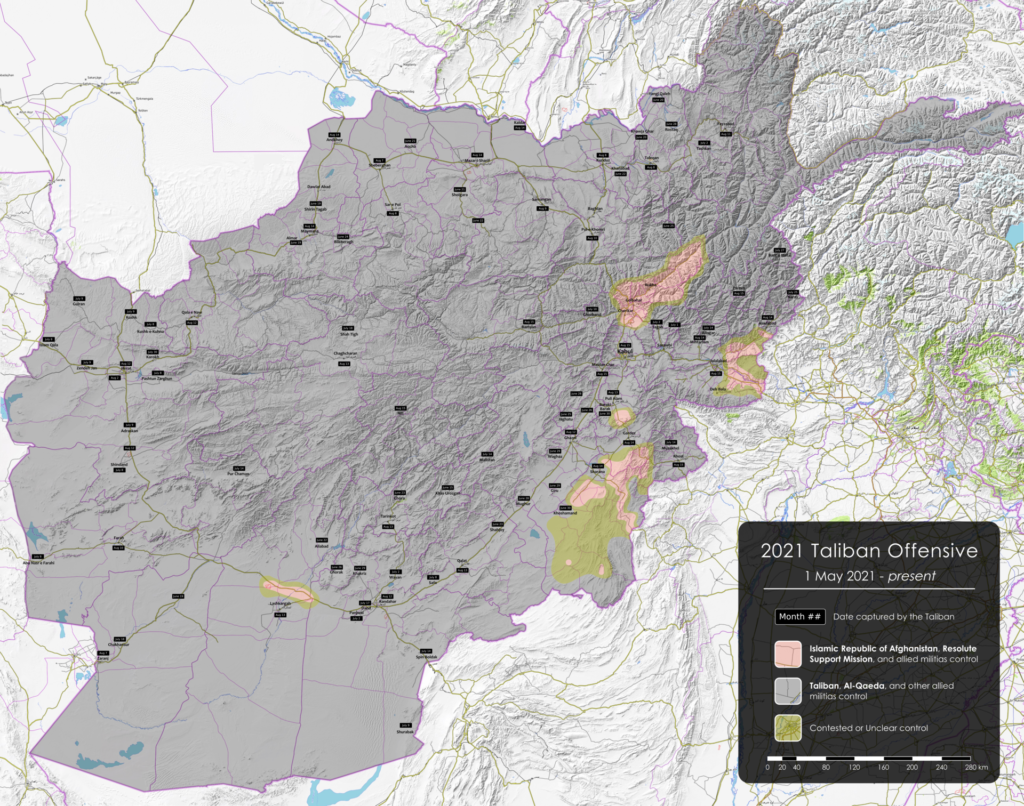
So, yes, this is an impressive military achievement. So impressive in fact that it alone should complete prove that the reasons could not have possibly been solely, or even mainly military reasons. As a number of reports suggest, by the end the Ṭālebān was gaining ground as fast as they could travel and there were hardly ever any fighting for the main cities. True, the Afghan army didn’t really seem to wish for a fight and as we shall see the political leadership acted treacherously, but the whole process went down so fast and smooth, this suggest a deal.
Now, was all that Ṭālebān advancement so surprising? Actually, quite the opposite. Ever since the US and its vassals invaded Afghanistan experts and the military warned that this will not be an easy operation. Especially not to stay. By the end of Bush Junior’s tenure this was all too clear and the American presence proved to be costly with no solution in sight, as the insurgency was not easing, and the puppet government was absolutely inefficient. Naturally, this prompted Washington to fetch up a new exit strategy, since the previous one and the “stay strategy” clearly failed. And that new maneuver was labeled Afghan peace initiative. Though it had many names in later years.
In theory, the American started to label themselves not as occupiers, but as peace keepers in a civil war. And this rebranding never stopped. The whole twenty years of destruction and occupation is sold in the Western media as failed attempt to bring peace and democracy. Dark humor indeed. In this attempt the Americans officially supported Afghan internal dialogue with all components of the society. Yes, including the Ṭālebān, which not only back then, but even today is listed all over the world as a terrorist organization.
So it happened in June 2013 that the Ṭālebān opened a “political office” in Qatar, so this venue could facilitate the “inter-Afghan” peace talks. President Obama even officially welcomed the move and commended the efforts of Qatar for facilitating these talks. Naturally, the Afghan government set up by the U.S. was furious and was protesting the “Ṭālebān embassy” in Qatar, but of course in vain. They were not involved in the “peace talks”, nor even invited at that stage, only years later.
Washington always stated that this in not an embassy, only a political liaison office – that was always the line of the Qatari government as well – and the aim is only to secure the peace negotiations. And just how much it was not an embassy? In 2016 even CNN showed that the office clearly stated: Embassy of the Islamic Emirate of Afghanistan. That is the name the Ṭālebān used for the country under their rule.
The aim at that stage, officially, was to secure a sole American soldier in the hands of the Ṭālebān, being held in Pakistan, and in exchange the Americans were asked to release 5 Ṭālebān top officials. The business, not surprisingly, even went through. The first gesture by both sides have been made for future fruitful agreement, and Obama promised a full pullout by the end of 2013(!). The major operations came to an end by mid 2014, and from that on the US-allied troops only supported Afghan operations, armed, equipped and trained the central army. Practically speaking, the Americans were started packing in 2013 and in the last three years they were gradually handing bases over to the Afghan army.
The negotiations in Doha went slow, but smoothly and the more open version started around 2019, when finally the Afghan government was invited to the “peace talk”. However, the negotiations kept on going in two different channels. At one hand the Afghan government was negotiating a deal, or a possible power share with the Ṭālebān, while on the other the Americans were negotiating with them. The first officially still goes on, but from the very first day the Ṭālebān officials flatly rejected any suggestions. And as time went by they proved to be right, there is nothing left to be given concessions to. Yet with the Americans a deal was formally signed on 29 February 2020, called: “Agreement for Bringing Peace to Afghanistan between the Islamic Emirate of Afghanistan which is not recognized by the United States as a state and is known as the Taliban and the United States of America”. Meaning the US government signed an international treaty with a recognized terrorist organization, which itself is a humiliation of international law. Only 4 pages long – at least the official, public version of it -, but nonetheless full of shocking deals. All of it is pure gold, but here we would like to focus just on three elements.
1. According to the agreement all hostilities cease between the sides and the US is committed to pull out from all military bases and leave Afghanistan with all its arms and personnel within 14 months after signing the document. That corresponds to 1 May 2021. This deadline was not met considering the new administration caused some delays, and was expanded to the end of August, then to September. But what a surprise, on 1 May the Ṭālebān operation started. Well, officially, in reality no significant change happened until mid June, when the Americans really started to pack up.
2. This promise was made by the US government, signed by the US government alone, but in the name of all allied powers present in Afghanistan. And this document was public since the day they signed it. So when the European and other allied government fake surprise now for the collapse it is not really honest, is it?
3. The deal specifically stipulates that within two months from signing negotiations must commence in Qatar between the Ṭālebān and the Afghan government in the frame of inter-Afghan talks. Thus proving that Kabul was not part of the process starting in 2013 and ending up in 2020. More importantly, however, the document has no requirement for any sides about these inter-Afghan talks. They don’t have to reach a result, they simply just had to “be”. And they were. But exactly from that point on we can understand that the Ṭālebān had zero incentive to give any promises or concessions to the Afghan government, as they knew perfectly that the Americans will leave, and as soon as they do, they can deal with the administration in Kabul as they please. After all, they made no promises to them, only to the Americans.
Now, who signed this deal? That is not officially disclosed on the document. However, State Secretary Mike Pompeo formally met with Mullā ‘Abd al-Ġanī Barādar in Doha in September 2020.
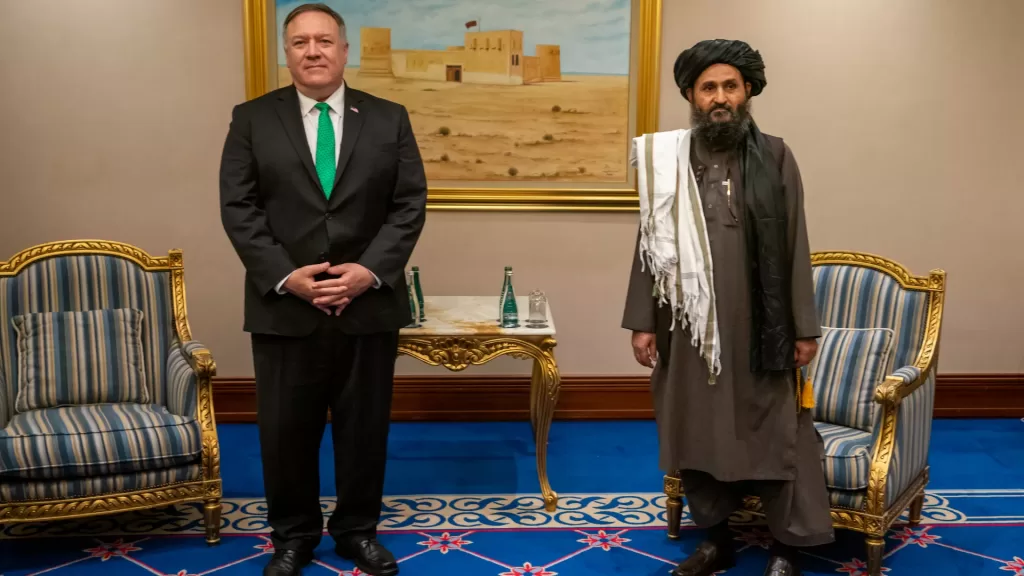
And who is this Mullā ‘Abd al-Ġanī Barādar? This Ṭālebān has a remarkable CV. Originally the Ṭālebān meant a number of semi-autonomous cells, which with the useful help of the Pakistani Intelligence (ISI) through the motivation of the American administration at the time became a fairly centralized movement. The core cell was founded and led by four people. Muḥammad ‘Umar, otherwise known as Mullā ‘Umar, who was the spiritual head of the movement and for a long time the undisputed leader, just like that of the Ṭālebān state later on. After the American invasion in 2001 he went into hiding. Never left Afghanistan and led small scale raids. He died of sickness in 2013, strangely the same time when the peace negotiations started, but his death was not revealed until two years later. His practical successor even before his death was Mullā Ahtar Muḥammad Manṣūr, a devoted hardliner, who caused dissent within the movement’s lines. He was killed by an American drone attack in Pakistan in May 2016. His undisputed successor, especially as an on-the-ground military officer was a third core member, Mullā Hibat Allah Ahūnzāde. He, just like most of the Ṭālebān leadership had a relatively safe life after the American invasion in Pakistan. He is now the so called local ruler of the movement. The fourth founding member, however had much bigger prestige then his two predecessors. He is Mullā ‘Abd al-Ġanī Barādar Ahund, who was so highly respected by Mullā ‘Umar that it was him who gave ‘Abd al-Ġanī his new nickname “Barādar” meaning brother in Dari and Pashto. Because Mullā ‘Umar loved his as a brother.
He would have been the natural follower of Mullā ‘Umar, but in 2010 the ISI and the CIA arrested him, once again in Pakistan. Which somewhat leaves the question that if most Ṭālebān leaders were eventually hunted down in Pakistan, how could Hibat Allah Ahūnzāde operate and organize a full scale invasion. In any case ‘Abd al-Ġanī Barādar was interrogated and kept behind bars in Pakistan. That is until February 2018, when Washington openly pressured Islamabad to release him, which happened. From Pakistan the Mullā left to Doha, where he took over the “political office” and the negotiations with the Americans. Which went so smoothly that two years later he signed the deal with the Americans and could pose with Pompeo some months later. This last act of the story was achieved by the mediation of Washington’s Special envoy to Afghanistan Zalmay Khalilzad, an native Afghan himself.
So what we see is that within the course of eight years, during three separate administration the Americans completely ignoring the government they built up in Kabul held intensive negotiations with a terrorist organization, eventually made a pact with it, and for that they even careful doctored the leaders of this group. The last being taken out of jail, just to sign the deal and take over movement after it practically occupied Afghanistan.
This is not surprising at all. Western expert sources already talk about a huge gap between the “international leadership” and the “on-the-ground movement”.That is also part of mechanism keeping the Ṭālebān bogged down in an internal struggle and a war with the remaining small fragments of the recent Afghan administration, to keep it humbled and dependent on international good will. Meaning, keeping it somewhat under control.
Also part of the puzzle that Afghan President Ašraf Ġanī last visited Washington in 24 June 2021 and met with President Biden. By that time the Ṭālebān was on the offensive, but officially they were not concerned and just discussed the future. This is the same Ašraf Ġanī, who held a long career in the World Bank, and spent most of his life outside the country. He was held a top international expert of “failed state models”, thus perfect for rebuilding Afghanistan. Once he even contaminated why Syria failed and how the West should rebuild it.
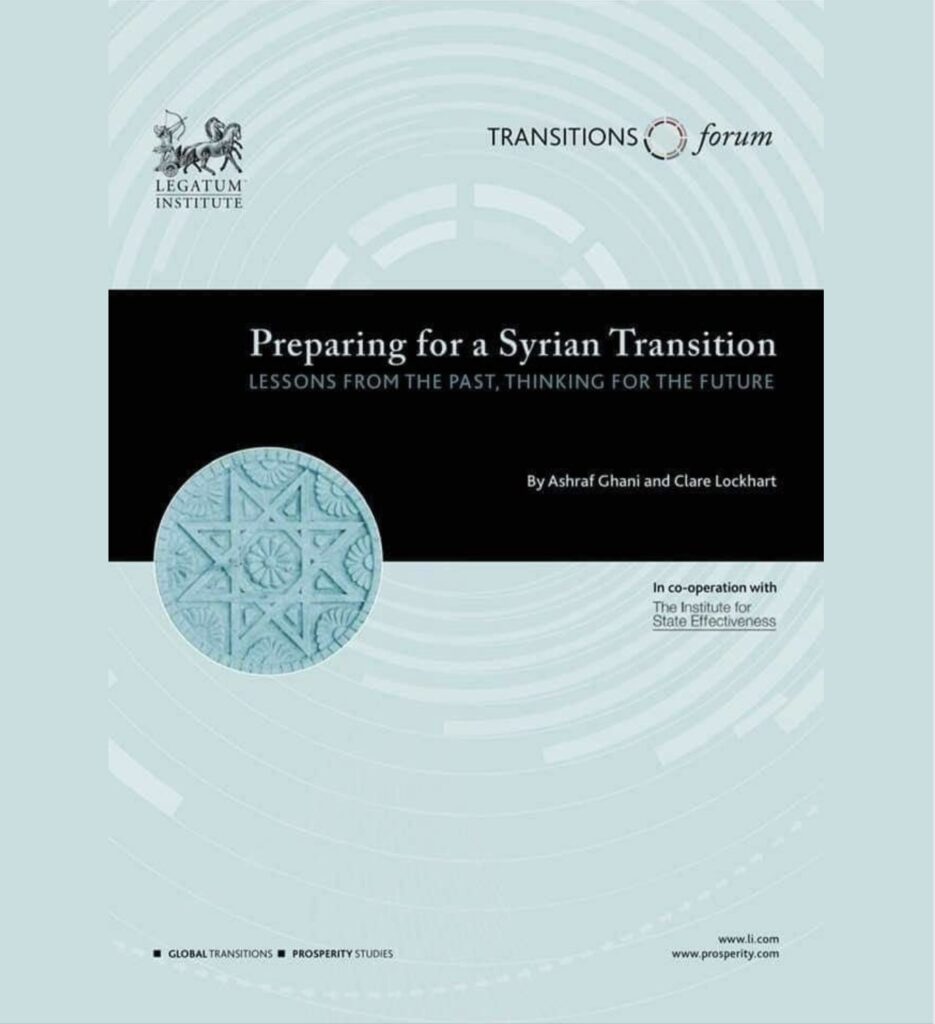
He is an important piece of the puzzle as well, so to understand why ordinary Afghan soldiers were not really to die for this government. According to the accounts Ašraf Ġanī left Kabul on 14 August. By some versions by cars full of cash, but others simply by car. Either way, his convoy drove directly to Tajikistan, from where he flew to Oman, and later to the Emirates. This is nothing short of a miracle, since all highways junctures fell to the radicals days, or weeks before. Yet he got through. And what was his justification for his leave? “If I stayed the Ṭālebān would have made a bloodshed!” Meaning there must had been an agreement letting him go in exchange for a smooth takeover. And that is what happened. He even made sure to leave chaos behind him appointing a university professor as his successor, which was soon forgotten and he vowed to return, for which he conducts talks. But with whom? Surely not with the Americans, or the officials of his government, who all curse him now for his betrayal. Ašraf Ġanī is a stereotypical member of the Afghan ruling elite in the last twenty years under the American occupation. Detached from daily realities, utterly corrupt, integral, though secondary member of the Western elite, who appears as an intellectual, but only proved successful in building personal connections. Him visiting Washington less then two months before the collapse hardly even addressing the upcoming disaster and handing power over at the last minute seems more like a service than a series of mistakes.
The only thing what could be described as “surprising” in this whole process is that it went so efficiently and on time, unfamiliar scene in the Middle East.
Easy takeover?
Most Western opinions now faint surprise how rapidly the Afghan army collapsed and handed over everything to the Ṭālebān. But was that transition indeed so smooth and surprising? In fact, most evaluations are very misleading. It is known that the core the Afghan army, mostly the special forces and strike teams were well trained, armed and highly efficient. And not coward at all. In June most of these troops put up a real fight, until they were cut to to the last by their enemies.
Most of the operations trying to push the Ṭālebān back proved to be suicide missions only eliminating the elite. Their fall was due to lack of support by their own regular forces, by their intelligence, and by the US. In many cases, like in Baghram, the American simply just left without even informing the Afghan troops about that. Also it worths to notice the Ṭālebān offensive did not appear from one point, or just from the Pakistani border, but even started in the north, and appeared sporadically everywhere. Meaning they were present within the society, well armed and ready for action.
Here we should mention that most of the Afghan army were simple conscripts either serving in the central army close to the Americans, or in a unit of a local strongman, a warlord. The offices, however, just like most warlords, were educated by the Soviet army. They remembered well what happened to the Afghan government left over by the Soviets and those foolish enough to stay loyal. The last President appointed by the Soviets, Muḥammad Nağīb Allah was killed by the Ṭālebān when they occupied the Kabul in 1996 and left his body hanging outside of the presidential palace. The West forgets this, but the Afghans not. On the other hand most warlords made a pact than and survived, so this is a proven option. Beyond that the Afghan army was plagued with corruption with officers capable of anything, conscripts not trusting them and fearing for the lives of their families, and complete “ghost battalions” only existing in paper, so the officers could take money after them.
Now, when these troops hear months of Ṭālebān promises that all who surrender will be treated well, and that was proven at every city handed over; when operation planned by inefficient politicians should be backed by armies only existing on paper; when politicians are the first to run; when everyone knows that the Americans are leavening and everyone remembers what happened when the Soviets did; when the Americans openly betrayed them; and when those who do fight are betrayed and massacred it is only fair that ordinary soldiers left. Either switched sides, or took shelter at a warlord. Simply put, from the very top down there was no functional Afghan state to die for defending it.
The only thing that kept the structure together was the US-allied military presence. Without that the structure had no coherence. The Americans knew that. That is why they agreed with the Ṭālebān. Was it otherwise and the Afghan army had real substance, it is unlikely they would have ever left.
So yes, this was a very easy takeover. Not even a particularly bloodily one by Afghan standards. But it had a reason. Because it was more of a handover than a takeover. Was it otherwise several question should be sufficiently answered, but these are not even asked. Specifically:
– How could Ašraf Ġanī run away, when all roads to Tajikistan were already controlled by the Ṭālebān?
– How come the Ṭālebān makes promises of safety and respect for embassy staff, or anyone surrendering, while in 1998 they even massacred a whole Iranian consulate in Mazār-e Šarīf and had no respect for anyone? Just like a terrorist organization.
– How come that even after a whole week ruling Kabul the Ṭālebān has no intention of overrunning the airport capturing thousands of foreign soldiers, diplomats and local values hostages? How could they keep this route alive with little regard for the benefits?
Isn’t that all familiar?
Strangely, this whole scenarios has already been played with the same tools, the same tricks, the same symptoms and the with the same insincere surprise at the end. Exactly the same thing happened in Mosul in 2014.
The Americans were about to leave and then Da‘iš was on the rise. The Iraqi army at that time warned and asked helped from the US, but they were left alone with the same pathetic “this is not our war” slogans, and even the officially sold armaments, like warplanes were not delivered. That is why after the fall of Mosul the Iraqi army had to be resupplied by Iran and Russia.
There as well the defense of the city was undermined by the governor, who was the first of run, weak moral, and the same “ghost battalions”. In reality a very little force defended the city, while the terrorist had detailed intel and managed to gain massive American supplies by the takeover of the bases in Mosul. Just like the Ṭālebān does it now.
The similarities are so striking in fact in two completely different countries that this alone should be a warning sign. That time the aim was to return and stay for the long run. In Afghanistan the goal is probably different. But clearly something is cooking.
Who are evacuated?
Now, in the middle of these theatrical confusion all Western governments rush to save their citizens – which is understandable – and the Afghans who served with them, or who are eligible for asylum. That is in fact not new at all, this pullout by the Americans was going on years. Even such mainstream “comedy programs” as John Oliver’s Tonight Show kept the public sensitive for the relocation of Afghan interpreters. In August 2021:
Just like he did back in 2014 after the fall of Mosul, when the Afghans were already lengthily brought up.
Yet somehow it is still going on by the Americans, who are still pulling these men out of the Kabul airport. What is always presented is the magic 5000 number of Afghan translators serving with the US-Allied troops. Sometimes it includes their families, but most likely family comes on top of that number. And it is rarely discussed who is understood under the term “family”.
Strangely, the American mainstream debate always focus on the term “translators”, as if the Americans never used in Afghanistan local trackers, middlemen, mercenaries on guard duty, auxiliaries and enforces on bloodier missions. They openly do that in Iraq with the Kurds, in Syrian with the mostly Kurdish Qasad, but allegedly not in Afghanistan. While we now from the accounts that are US-trained special commando members still alive there.
Not only the Americans, but all states involved are evacuating these men along their citizens. But what is so suspicious in that? In one account a Hungarian service provider, practically one of the mercenary guards for the Dutch embassy in Kabul told that they were simply left behind by their employers. Fellow EU citizens had no respect for each other. President Biden himself in these days says the cannot guarantee the final outcome, that all US citizens will make it out. But for some reason the priority is to save these Afghan “translators. Looking at the pictures that is not so sure, as their numbers are somewhat questionable too.
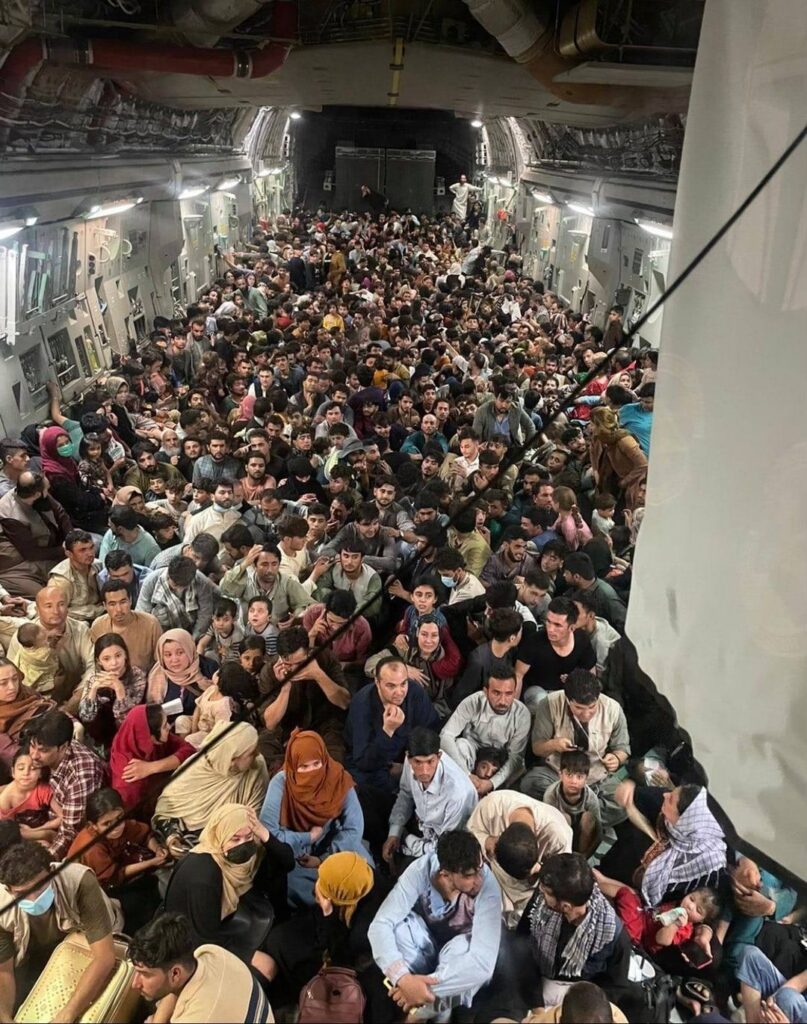
What we see are most likely highly training Afghan troops, their families, and some service providers – like translators – who took part in all the bloody operations of the Americans troops in the last twenty years against their own countrymen. In other words, highly trained and experienced mercenaries and their families.
And while their evacuation is a top priority, most would assume the successful ones will soon arrive to California, or Florida. That might be the case for some, but the majority is not going to the US at all. Where are they heading?
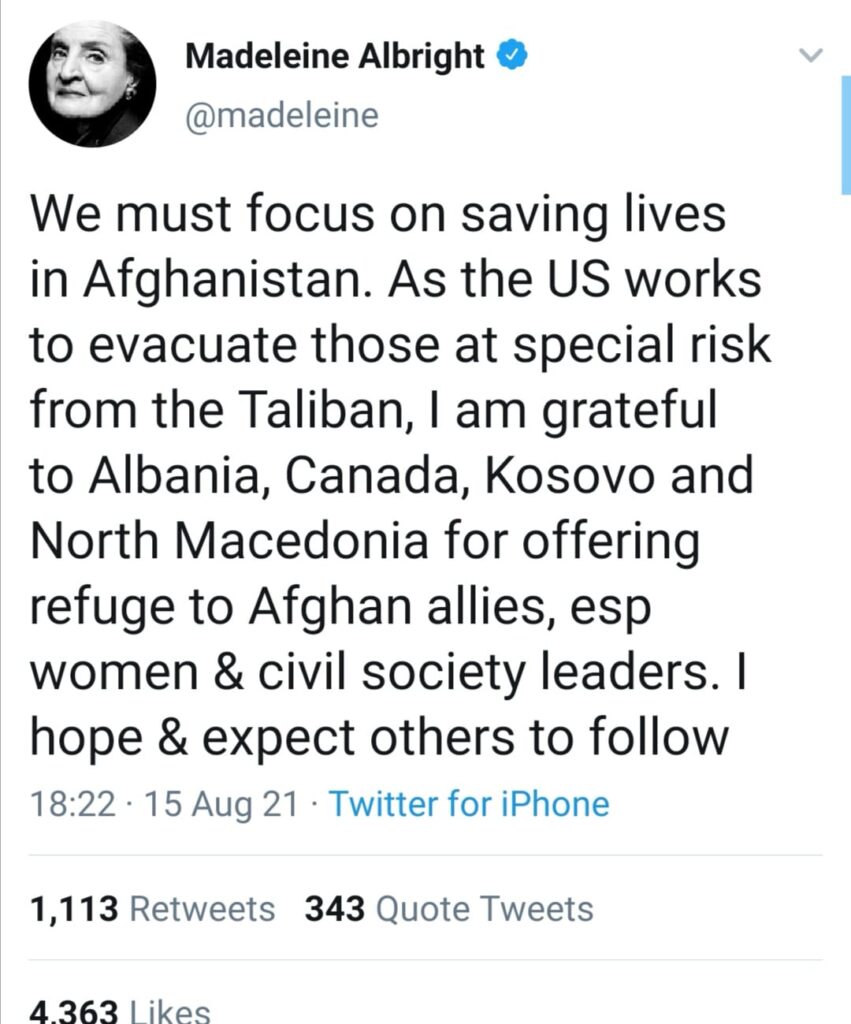
Albania, Kosovo, Northern Macedonia. Mostly Albanian populated countries, while Albania was happily volunteering to help. And this news first came from Clinton’s former State Secretary Albright, who was the chief architect of dismantling Yugoslavia and creating Kosovo by the use of an other terrorist organization, the UÇK, or Kosovo Liberation Army. The main leader of the UÇK Hashim Thaçi the first Prime Minister and later even President of Kosovo, until he was arrested for war crimes. This is the land most Afghan “translators” and their families are heading. But why there? These states are not specifically knows for their high living standards. And with any sane mind, what would an Afghan Dari/Pashto-English translator do in Kosovo or Albania for a living?
The answer is that Albania is home to another Persian speaking group, the infamous MEK, or Muğāhidīn-e Halq-e Irān, the Holy Warriors of the People of Iran. This Iranian political group was founded by Mas‘ūd Rağavī in Iran in late ‘60s, which he later led with his wife, Maryam, who is the leader now. The MEK performed many terrorist attack even against Americans until the Islamic Revolution in 1979, in which it took part. Soon, however, became an enemy of the new government under Homeīnī and launched a vicious terror campaign in Iran. It was eradicated in Iran, so the most of them left to France and from there to Iraq in 1983, where they fought against their own country. When the war ended the core membership and some leaders stayed in Iraq until the American invasion, and even after. Rağavī disappeared – probably got killed – during these years, but in 2014 the Americans relocated them to Albania, where they built their infamous Ašraf 3 base, a real military compound.
The MEK was originally based on Marxist ideology, which soon incorporated Islamic tendencies and was militant from the beginning. Later on, however, a prophetical cult was built upon Rağavī, and by now his wife. It is a terrorist organization – it was designated as such by the US until 2013 – with a bloody history, but also a twisted bloody cult, which like many cults love to incorporate women and children. They have a specific hatred for the current Iranian government helping in Americans and Israeli assassinations within Iran, spying for them and conducting terrorist attacks on their own.
Yet they are immensely influential. In their biggest annual (!) rally in Paris 2017 they even had National Security Adviser John Bolton invited, who saw them the next Iranian government and promised to overthrow the current one together.
In later years such people payed a visit to the camp in Albania as Rudy Giuliani, Trump’s lawyer and adviser, or the Albanian President.
But what about Canada, and what Albright “forgot” to mention, Wales, also being generous hosts? Well, Canada is the home of the most influential supporters of the MEK within the Iranian diaspore. And about Wales? Wales was the main base for the military groups – later turned out to be terrorists – trained to Syria.
Amazing coincidence that Afghan “translators” and their families are pulled out to otherwise poor countries, where they can find excellent paying jobs at an also Persian-speaking dissident group, which currently is full of money and support, but lacking members and muscles.
For next week
Of course there are many sides of this story and why it is fairly probable that the collapse of the Afghan government of the last 20 years is not an end, but the beginning of other, even bigger projects.
These aspects, however, shall be discussed next week, when we continue.

